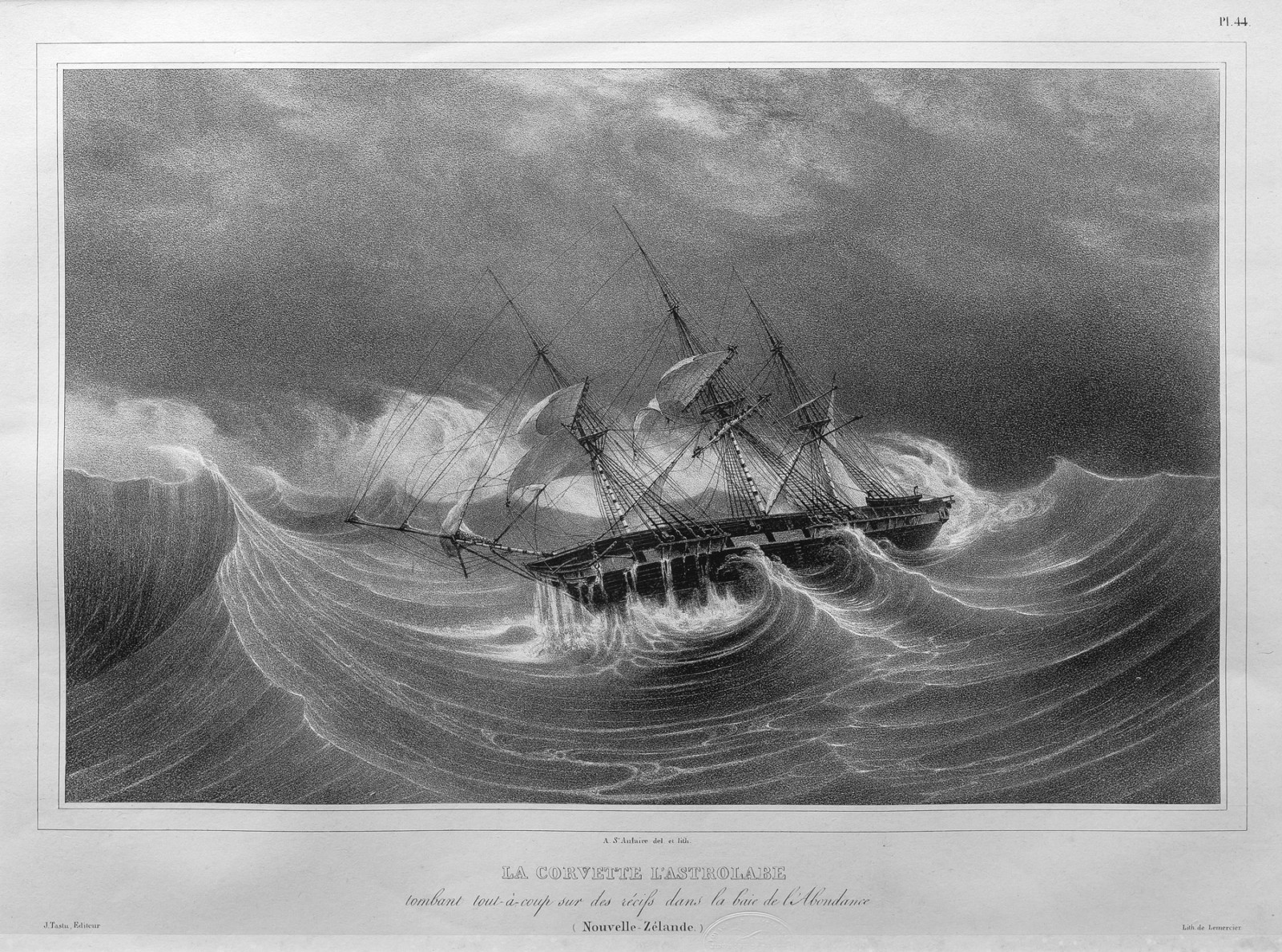SAINT-AULAIRE, Félix Achille;
The Corvette Astrolabe Falling Suddenly on Reefs in the Bay of Plenty
1833
Lithograph on paper
325 x 495mm

Original title: ‘La corvette l’Astrolabe tombant tout-à-coup sur des récifs dans la baie de l’Abondance (Nouvelle-Zélande)’. Plate No. 44 from Jules-Sébastien-César Dumont d’Urville, Voyage de la corvette l’Astrolabe exécuté pendant les années 1826–1827–1828–1829 (Paris: J. Tastu, 1833). Other lithographs from the series can be viewed here.
The following text comes from the catalogue for the exhibition Tirohanga Whānui.
This lithograph records a popular subject of the time—that of a small sailing ship at the mercy of tempestuous seas. Negotiating these threatening conditions called on all the skills of the crew as many diaries confirm.
The history of the corvette Astrolabe is complex. First launched at Toulon in 1811 as Ecurie, she was a horse transport vessel of 380 tons. In 1813, she was transformed for the transportation of men and ammunition and renamed the Coquille. After further refurbishment for survey voyages, she sailed in August 1822 under Duperrey on her first extensive voyage to the South Seas, returning in 1825.
In March 1826, the Coquille, now renamed the Astrolabe, left Toulon under the command of Dumont d’Urville on a voyage that was to end in 1829. The name was chosen by d’Urville himself in commemoration of an earlier Astrolabe that had carried the explorer La Pérouse (1741–88) on his 1785 voyage. That voyage had ended with the disappearance of the ship and all on board somewhere in the Pacific.
Accounts of the 1826–29 voyage of the Astrolabe under d’Urville describe how the ship rode out tempestuous storms, ran aground six times and avoided sinking only by a miracle. In 1828, on the way back from the South Seas, d’Urville was able to ascertain that the first Astrolabe had been wrecked at Vanikoro, Santa Cruz, north of the New Hebrides Islands in 1788. He and his crew erected a monument to the memory of the lost sailors.
On d’Urville’s third and final voyage to the Pacific, the Astrolabe was accompanied by the Zélée under Charles Jacquinot. This dangerous voyage lasted from 1837 to 1840. On his return, d’Urville was promoted to Rear-Admiral.
Exhibition History
Tirohanga Whānui: Views from the Past, Te Kōngahu Museum of Waitangi, 15 April to 15 September 2017

